
About SqncBrk
Sequence break is the act of obtaining an item out of order or performing certain action out of order. In…
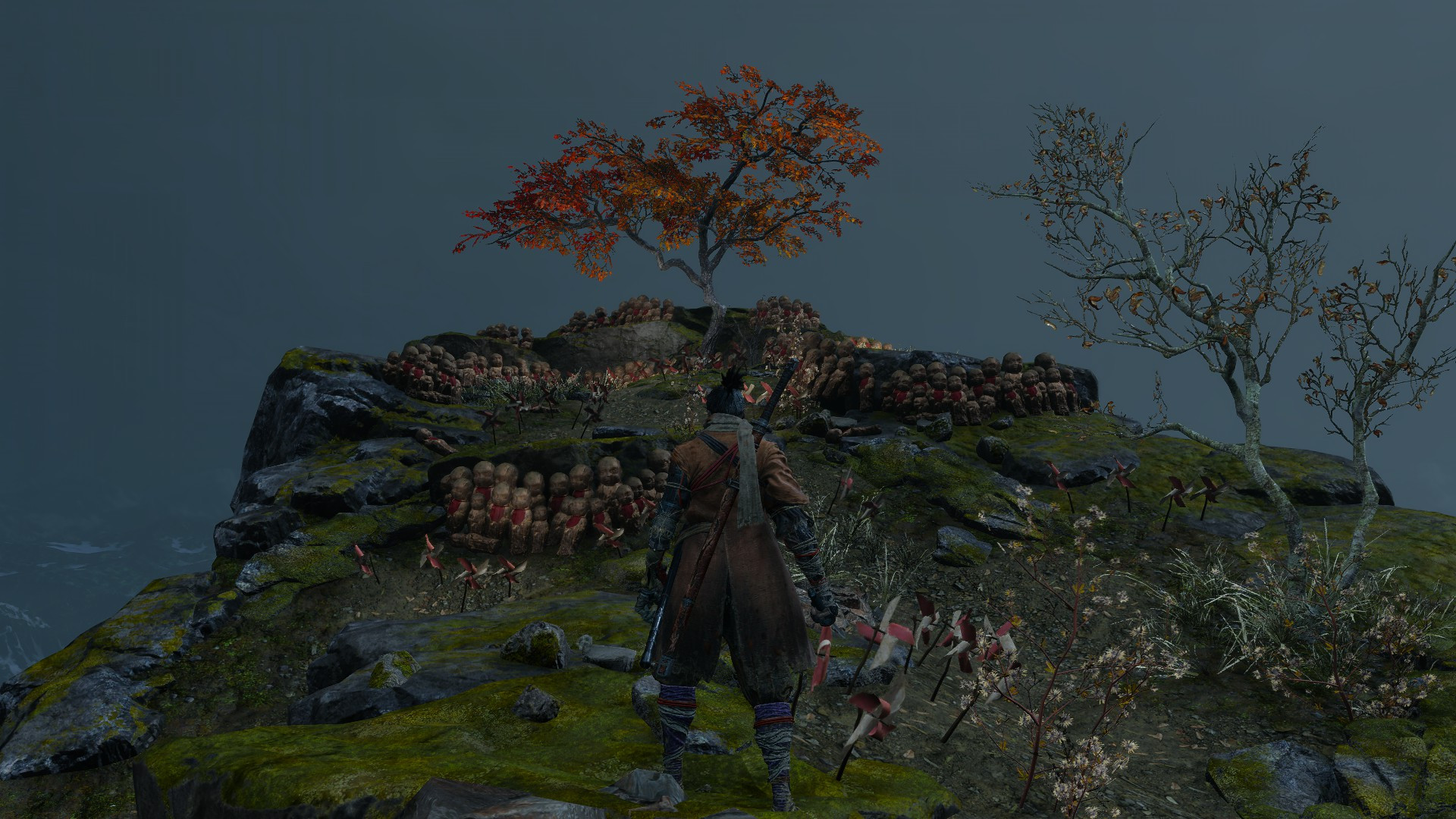
It's inevitable, but any possible discussion and analysis of Sekiro is destined to be riddled with constant comparisons to Dark Souls. To be frank: the game actually relies heavily on this familiarity, hoping that every Souls veteran will feel at home as soon as they launch the game. Similar control scheme. Enemies that will absolutely destroy you in a first few encounters. Secrets and hidden pathways.
This game functions according to the same rules by the same rules, but changes the façade a bit: Sculptor's Idols in place of bonfires, healing gourd instead of an Estus flask, plain experience points instead of Souls.
There are differences, of course. Both miniscule twists of the formula and a full-fledged changes. Some things that were iconic since “Souls” are simply gone. You can't recover your losses in the event of death anymore. This time gone means gone. More notable changes are way more impactful than these missing strolls through the enemy lines. Gone are all the multiplayer interactions. No summoning to help other players, no invading to make their day worse, no ghostly visions of them dying in their playthroughs. No more messages to warn you about an upcoming ambush or trick you into jumping off a cliff.
Perhaps the biggest one may be a bit of a bummer: no more customization. The protagonist is not just a mere vehicle of player's empowerment anymore. The Wolf comes with his own backstory, voiced over dialogues, motivations and even secrets.
Orphaned at young age, raised into a life of servitude as a shinobi, serving as a personal protector to the divine prince — certainly not just an unknown undead anymore. Not to say there aren't different outcomes to quests or different endings (the MVP of non-linearity), but it does take away some agency from the player, if only to provide a more compelling narrative.
But all these differences took a back seat when the game was released. Main focus of online discussions, reviews and essays was simply on how hard it is compared to previous FromSoftware games. And the most common feedback was: “Holy fuck, this is way harder than Dark Souls and Bloodborne were”. You have to give it to developers: it most certainly was the perception they were going for. But if you dig a little deeper, if you analyze what the game is doing, not just engage with it, you may see through the charade.
Smoke and mirrors are numerous: relentless sped-up rhythm of battles, explicit lies about game mechanics, pronounced huge health bars (which stay static for most of the boss fight and deplete in mere seconds when you deliver the last deadly blow — a deathblow if you want to use game's vocabulary).
Seems impossible at first glance: the usual heavy hits keep coming non-stop, enemies gang up on you surrounding from all sides. Then there's no shields and no rolls out to safety. Sidestepping is slow and unreliable, there's seemingly no way to avoid the onslaught. That all explains why Dark Souls veterans really feel uncomfortable at the start of the game. It just doesn't click for quite some time: the trick to success is being more aggressive. With stamina out of the equation spamming your actions is not such a horrible mistake. Yes, timing the perfect parry on each of the opponents' blows is much more preferred than just hoping to catch most of them with erratic button presses, but lots of enemies don't just follow the usual target — windup — strike template, instead they strike multiple times.
In the words of Miyazaki himself: “This work focuses on the clashing of swords, and searching for a moment’s weakness to deliver a final blow as you wear down your enemy.”
The trick to Sekiro's combat is that the rhythm is more of a tug of war rather that Dark Souls' aikido. Your blocks will always deflect 100% of incoming damage as long as your posture bar is not filled up to the brim (well, at least until you venture into NG+ where you can forego this useful feature if you want to have more challenge). That means that even if you don't parry the enemy attack perfectly you're still safe. Waiting for an opening in this barrage and going on offensive is the main tactic.
Posture is the new darling and a prime focus of the revamped combat system. Simply put, it's a limited amount of “energy” that both you and enemies have for blocking incoming hits. Each conclusive hit fills up a giant glowing golden bar until it turns red and finally allows to land a powerful “deathblow”. Left untouched posture gauge will slowly deplete, so if the onslaught has been interrupted, the process will have to start again. On top of that the lower the health is (if one of the strikes was not blocked) — the quicker posture bar fills up. The rules outlined above apply to both you and the enemies. On top of that comes the parry timing: if you land your block just in time it results in a counter-attack of sorts. That is one of the fastest ways to fill up enemy's posture gauge.
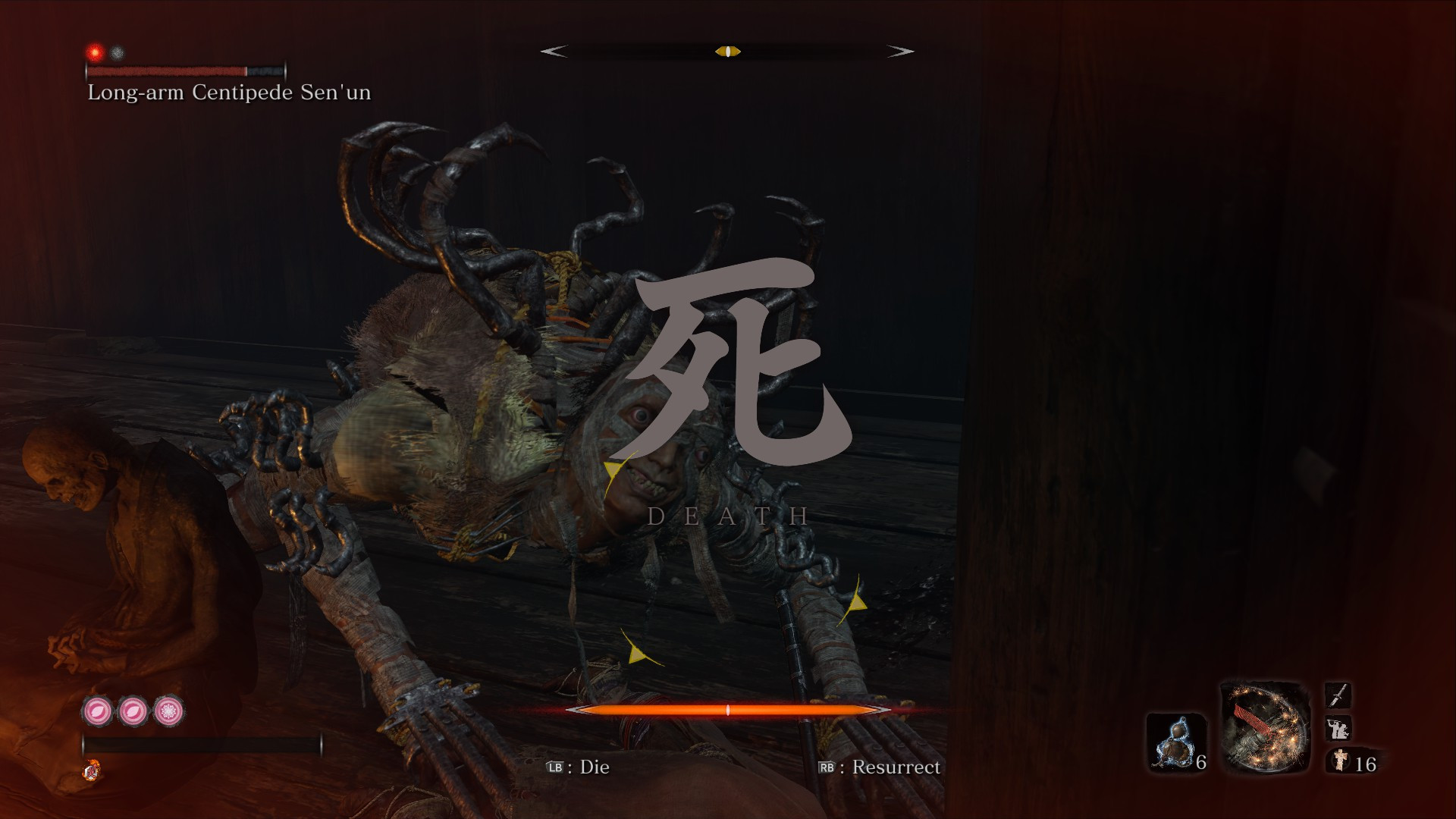
Not all attacks can be blocked though. Some particularly dangerous ones are called perilous and are signalled by additional glowing kanji symbol that pops up in the middle of the screen. Those you need to avoid or counter with special moves.
Remember how clumsy, how hard to perform, how frustrating jumps were in Dark Souls? You have to take a small run-up, the timing is very strict and a small miscalculation leads to a disastrous error? Well, no more. Sekiro can spring into the air instantly while either standing in place or running. What's more, there is a double jump — from the very beginning, no less. And since there's no more stamina limit you can just keep sprinting everywhere; yes, during the fights too. It is quite a viable solution to dealing with some of the bosses.
Then there's verticality; and not just architectural one (after all Souls series often organised their zones in a multi-layered cake if not even serpentine). Losing an arm in the prologue grants an access to an arsenal of different “prosthetic tools”. You won't own them all from the very beginning: you'll have to find them. To attach them you'll have to bring them back to the Sculptor (that kind soul that picks up the protagonist who passes out after said arm loss and brings him to safety). The very first tool you'll receive right out of the gate. It's a grappling hook.
Now when you run around the prompt to grapple will occasionally pop-up. It's a bit disorienting at first: the leaps can be quite big, but the increased mobility helps a lot. Just like that, with a press of a button your hero can instantly fly two stories up or down and safely land out of harm's way. Or in position to attack. Or just on his way to the next point of interest. Sometimes there's simply no other ways to proceed, so mastering grappling hook usage is somewhat mandatory. Thankfully the points you can grapple on are numerous — you're never truly more than few meters away from one. Best of all: you can use them in combat too. Repositioning to the rooftop or a high up tree branch gets you a small breather, but don't get too comfortable — some enemies will reach you even there with their firearms or other ranged attacks. In combination with jump attacks this gives you another dimensions to orchestrating your fights (especially with multiple enemies). In fact, if you manage to successfully lose enemies' sights while jumping from vault point to vault point you'll re-enter stealth mode and a jump attack will be an insta-kill deathblow.
It is appropriate, being shinobi and all, that staying hidden plays a significant role in conquering the game's world. FromSoftware has previously had some experience in publishing Tenchu games, and for a while Sekiro was even planned to be a new installment for the series, but ultimately it's quite a different beast. It's in no way as deep and challenging as games that are fully based around the idea of being sneaky. Staying out of sight simply gives you a few key advantages: killing regular enemies instantly, avoiding unfavourable match-ups against huge crowds and cutting the number of deathblows you need to deal to a “mini-boss” by one. As per usual — to stay hidden you need to crouch and stick to the shadows. You can hide behind walls, in tall grass, and even under the floorboards.
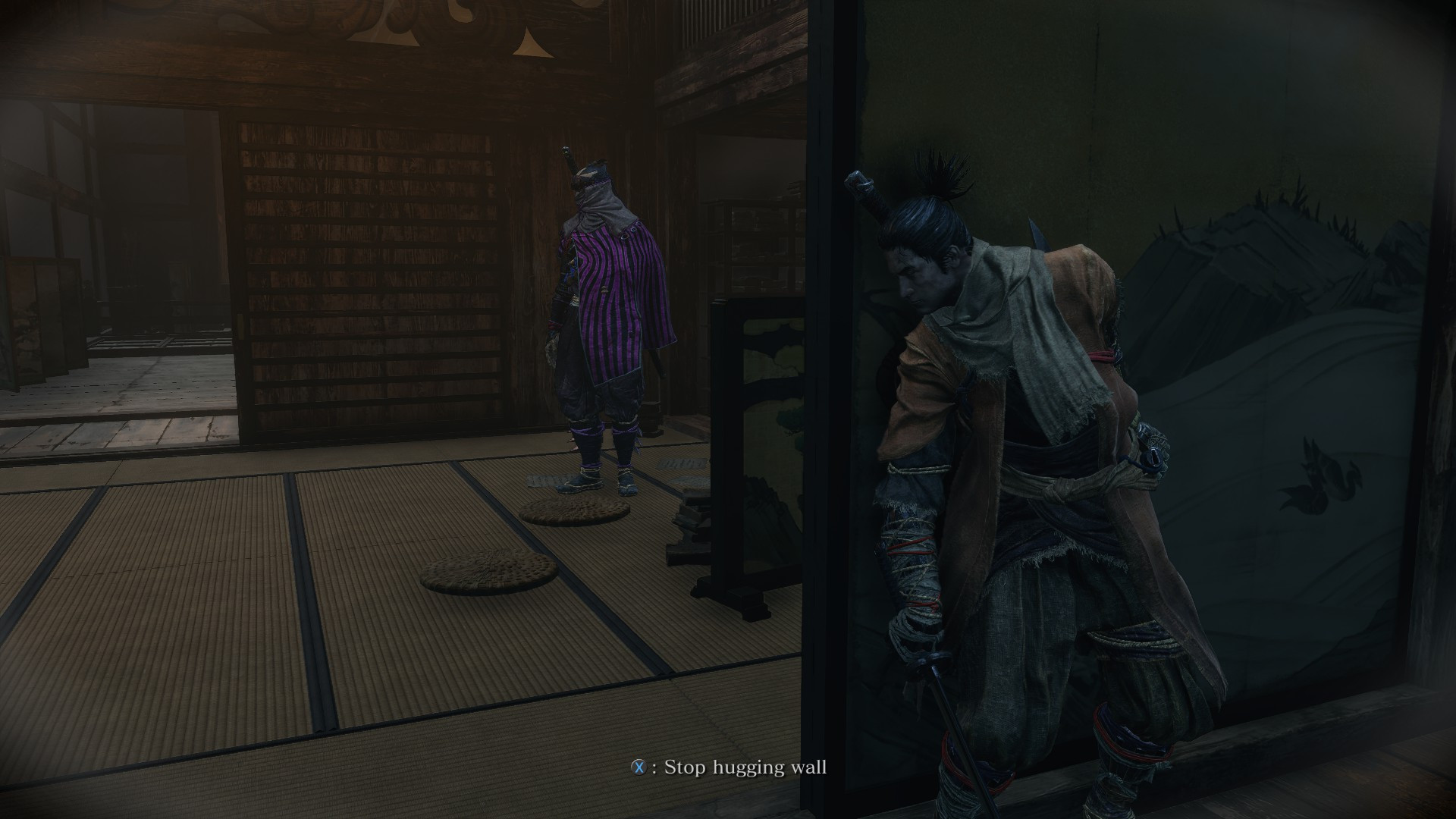
There are a few specific items, such as ceramic shards the only purpose of which is to further reinforce the archetype: take cover behind the corner, draw attention of one of the patrolling guards by throwing this otherwise useless junk at them, slice their throat as soon as they get near. But this is as far as the game goes — there won't be any body hiding, enemies won't alert each other upon finding something fishy and as soon as you lose their sights for long enough they'll go back to their routines. It isn't quite reliable, though — sometimes you'll be able to pull off that extra stealth kill or two, and sometimes those flutes and drums will start banging combat music again. After all, stealth is just an icing on the cake of sword clashing frenzy. The tension is real: a gang of enemies will make a quick work of you. Those “freebies” are vital. That is until you sink a 20–30 hours in the game, master parrying, learn all the attack patterns and enemy placements. Then a minor slip-up and becomes nothing. If anything it's faster to just chop a bunch of guards into pieces than to pick them up one by one while crawling around behind some fence and waiting for them to spread out.
But mastery will come later, first time you'll be glad to take any help you can get and that one extra bar of health to go through on a mini-boss doesn't even feel like it gives enough edge. This is by design. It's an order of things, it's how you're supposed to approach the encounter. Get rid of regular enemies, run behind the shed and crouch until the combat drops, crawl back and backstab that mini-boss. The way to victory sticks to this pattern pretty closely.
Applications outside of combat are limited to occasional eavesdropping and potential skipping of some of the enemy packs. Then again, you can just run past them: as usual, the enemies will chase you for a while, but will lose interest when you cross the invisible border to the next area.
The one way to tell that stealth is not essential is to look closer at boss fights. Unlike most mini bosses, the main ones you'll have to face in a “fair” fight. You'll have to go through the posture bars multiple times, strike out those red orbs one by one while the boss goes from punishing to impossible. You'll run out of healing gourd charges and consumable items, and you'll die. And then you'll die again. This is a FromSoftware game after all.
There's a twist though: immediately after dying you can just rise from the dead with a touch of a button. Pulling off successful deathblow resets this ability — you'll be able to rise again.
There is a way to increase the number of available resurrections, and a usable item to quickly restore one instead of actually putting in a hard work of parrying and slashing. There is even a secret line of dialogue that you can only get by using such an item.
Challenging nerve-wrecking expeditions to retrieve your souls — one of the most famous mechanics of Demon's Souls, that lots of games have copied since then — those are gone. Now you just either loose half of what you had on you at the moment of “final death” or you receive Unseen Aid. Seems like a huge deal, but ultimately it just means that you're going to suffer that loss few minutes later. Experience points are halved when you die, but they have stop-gaps in the form of ability points: once you gain one it never goes away. The other important currency — sen doesn't have that failsafe mechanic. The loss is not the end, but it's better to spend your gains rather than try to save them. And if you really want to save for the future, the game gives you and option of gold bags that vendors sell. Conversion rate may seem outrageous at first, but when you realise that unlike the sen that you carry around these are out of touch of fate, it will seem like a much better deal.
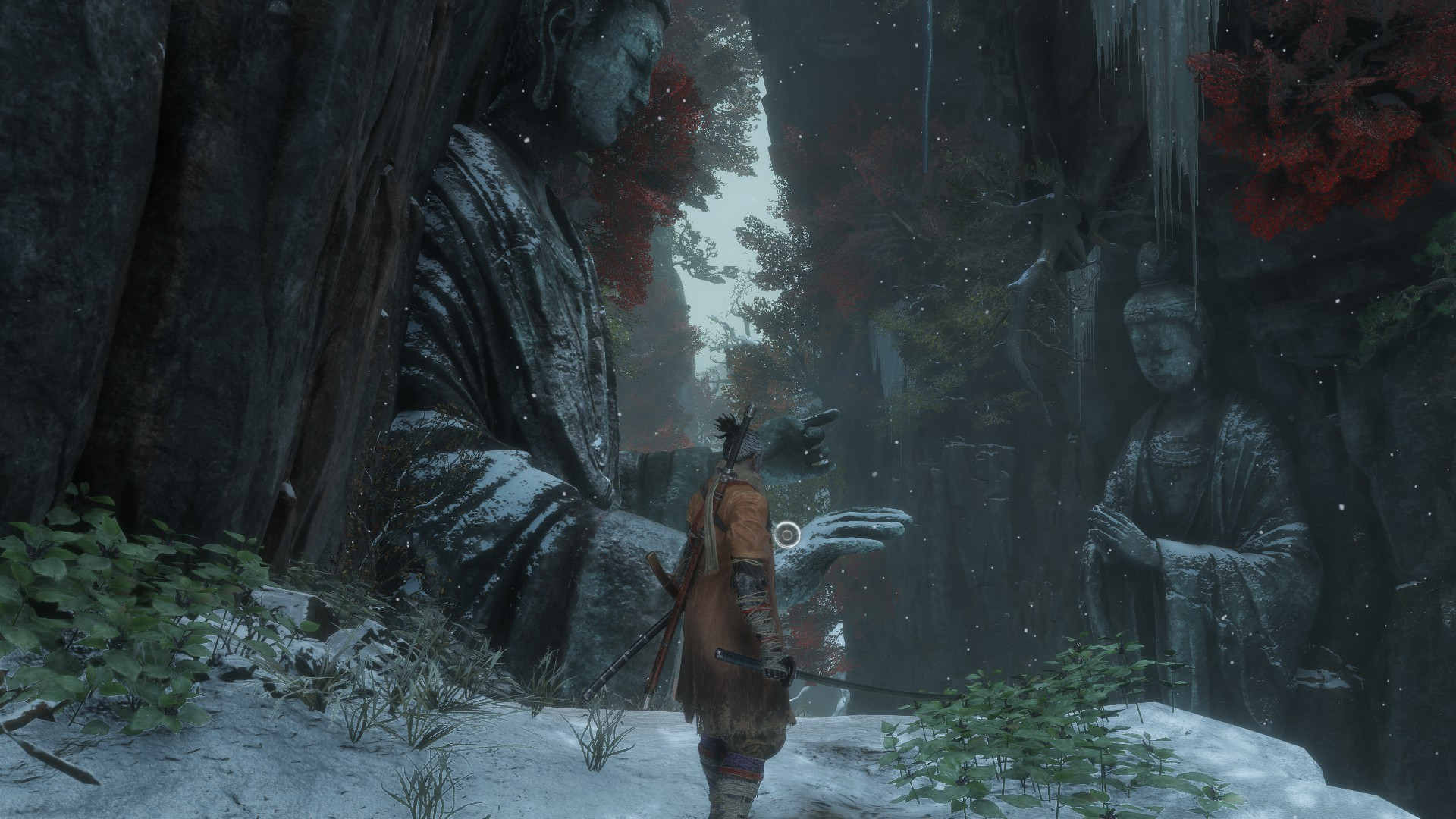
Because you will die at some point. Only to resurrect again. It's not just an interesting twist, not just a mechanic for the sake of giving players more edge. It originates in the story and it'll be explained properly. The chase of immortality is at the core of the game's conflict. Your lord has it, your protagonist has it (and that's the reason you can come back in the heat of the battle). Genichiro (the guy who cuts off your hand in the prologue) wants to get it. And there are quite a few factions who try alternative ways to achieve it.
The conflict between factions is not particularly indecipherable, as you would've expected basing your expectations on previous FromSoftware games. That is, perhaps, the biggest difference compared to Dark Souls: how the game presents its story.
There are, of course, bit and pieces, hints and tips scattered in items' descriptions, visual clues in the environment — all the usual tools in FromSoftware's toolbox. The puzzle of the story though is much more accessible. The pendulum didn't swing too far back: there won't be a narrator saying “previously”, no character will preclude something they want to say with “as you know”. Instead for a first few hours you'll be bombarded with names that mean nothing yet, references to events that you know nothing about yet; eventually you'll be able to piece it together.
This is where the difficulty makes a nosedive. You don't need to come prepared anymore. This game doesn't require you to know a dozen of obscure sources to decipher its lore; it's not necessary to rely on analysis of internet crowds and dedicated video game bloggers. You can just understand it, even though characters will occasionally withhold information to pursue their own agenda.
Your protagonist's looks can't be customized at all, but as a trade-off he has his own personality and voice. No more awkward silence: Wolf will state his opinions and interact with other characters as a proper protagonist. Sometimes he'll leave the key decisions up to you, but sometimes that decision will not be there for you to make.
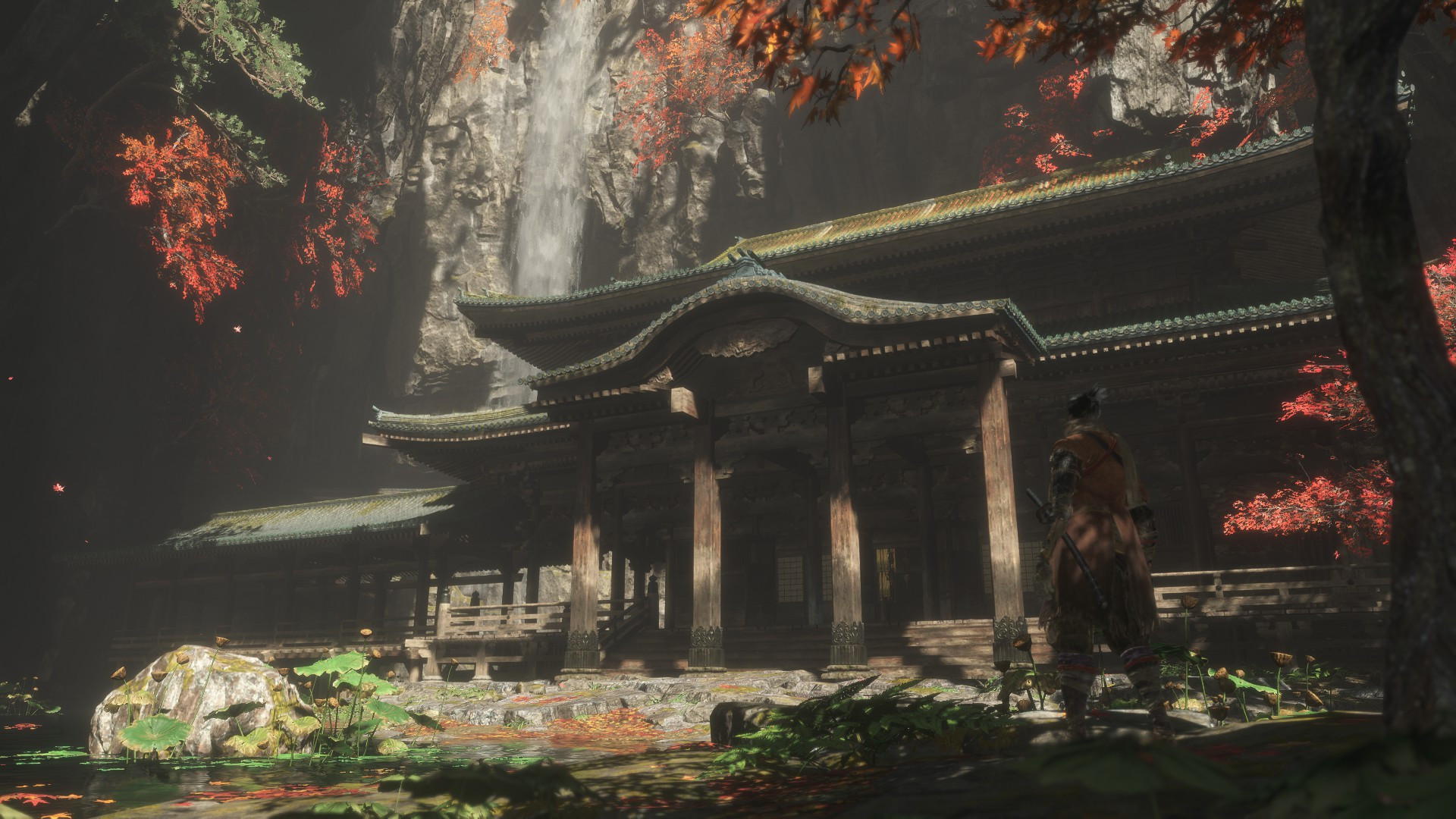
The tight control over the story is matched by an equal shrinking of the game world. It's still grandiose and has hours and hours of locations to explore. It incorporates such twists as even time travel, but it doesn't go to the same lengths as Dark Souls did to hide its secrets. Secrets themselves seem less numerous and much easier to discover. They still feel really rewarding, but they are now located in places where you will look for them. There's only one elevator, and it doesn't have a hidden jump-off. Maybe it is because at this point for a Souls veteran it'd be more of a chore than a thrilling discovery.
A lot of these simplifications end up being quality of life improvements. The poison swamp area is way less annoying and disorienting.
The end result is a more compact game that will take half of the time to explore compared to previous FromSoftware titles. And after the announcement at E3 2019 we know why: this game is more of a small intermission before the large-scale (or at least what feels like a large scale) next game by the studio: Elden Ring.
Still, that is something to say: when the only substantial downside of the game is that it simply isn't as large scale as its predecessors. Compared to any other major release this year it is still enormous, magnificent and oh so very deep. You can easily sink a hundred hours into it if you intend to defeat every optional boss, see every ending, complete every side quest and get all the achievements. There is a plethora of different prosthetic tools to try, different approaches to combat and ever-rising difficulty of every new game cycle. However you look at it, it's still a masterpiece.